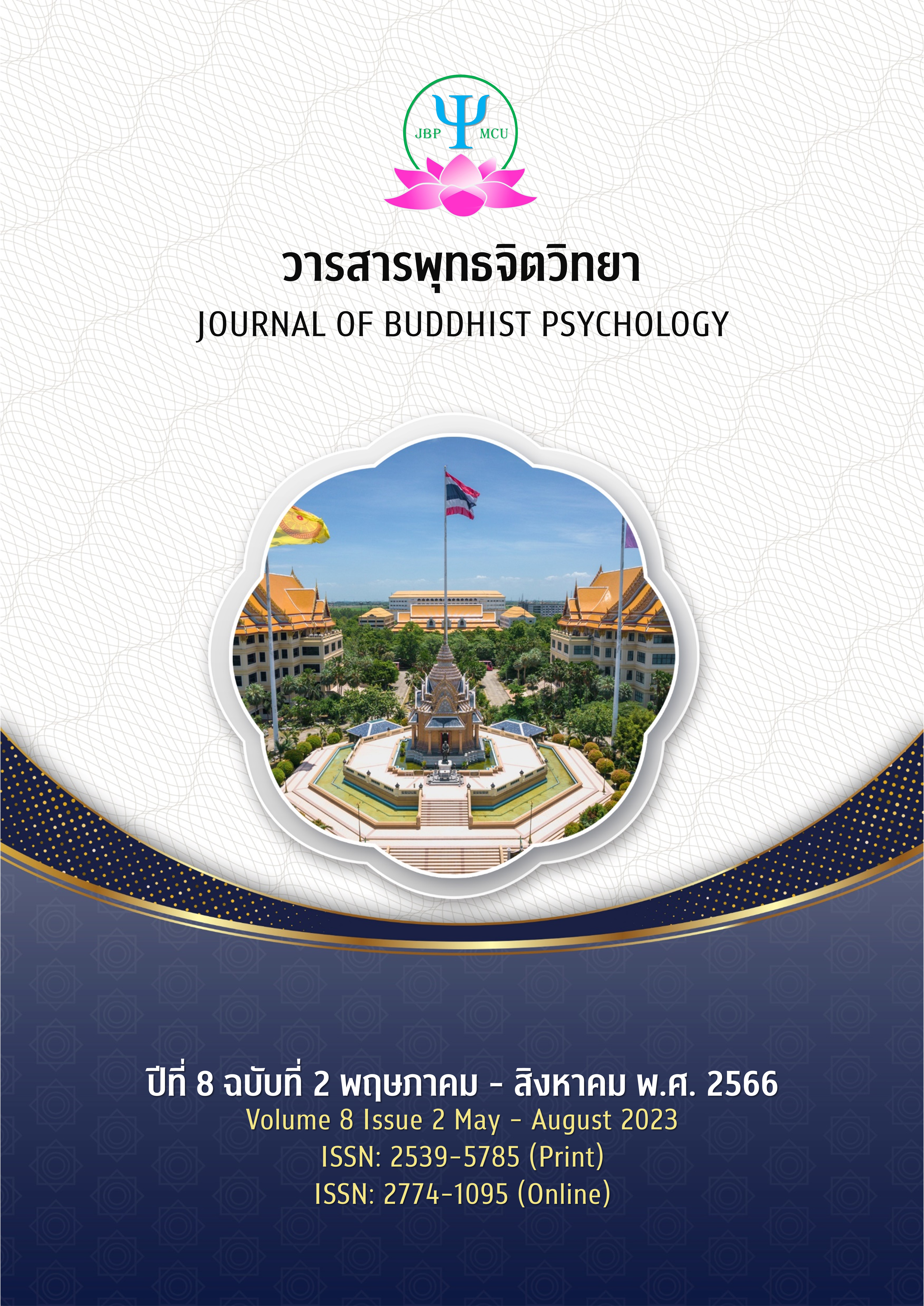Psychosis in Buddhism and the Buddhism Treatment Method
Main Article Content
Abstract
This article mainly discusses Psychosis in Buddhism and the Buddhist treatment method by analysis and synthesis from the study in the Bachelor of Buddhist Program (Buddhist Psychology) and Master of Buddhist Program (Psychology Life and Death) Mahachulalongkornrajavidyalaya University. Both are integrated programs between Psychology and Buddhism. However, the difference between Buddhism and Psychology is that Buddhism considers a mental problem that is not only a mental illness patient or psychotic patient. Furthermore, it considers the problems of every person still suffering or impaired. In other words, Buddhism is interested in the suffering of every ordinary person who cannot end suffering. So this is the issue that Buddhism is interested in: the problem of every ordinary person in ordinary society and extends to all problems affecting every person’s life and society. Psychology places importance on scientific methodology as objectivism or investigation by experimental as concrete objects and visible perception, for example, overt behaviors, behavior expressed in society, Etc.
Article Details

This work is licensed under a Creative Commons Attribution-NonCommercial-NoDerivatives 4.0 International License.
References
กาญจนา คาสุวรรณ และนิตยา เสาร์มณี. (2521). จิตวิทยาเบื้องต้น. พระนคร: การเวก.
จำลอง ดิษยวณิช. (2551). ความเข้าใจแนวพุทธเกี่ยวกับความผิดปกติทางจิตใจ. วารสารสมาคมจิตแพทย์แห่งประเทศไทย, 53(3), 243-255.
นายแพทย์ยงยุทธ วงศ์ภิรมย์ศานติ์(2552). จิตวิทยาแนวพุทธ. สืบค้นเมื่อ 12 มีนาคม 2566, จาก http://medinfo2.psu.ac.th
บุญมี ปาละวงศ์ (2537). ธรรมชาติของมนุษย์ทางด้านคุณธรรมจริยธรรม. สืบค้นเมื่อ 23 มกราคม 2566, จาก https://www.baanjomyut.com/library_3/extension-2/ethics/04.html
พระธรรมปิฎก (ป.อ. ปยุตฺโต). (2539). จากจิตวิทยาสู่จิตภาวนา. (พิมพ์ครั้งที่ 6). กรุงเทพฯ: มูลนิธิพุทธธรรม.
พระราชพรหมยาน (วีระ ถาวโรมหาเถร). (2541). คู่มือปฏิบัติคู่วัดท่าซุง เล่ม 1. ม.ป.ท.
มหาจุฬาลงกรณราชวิทยาลัย. (2539). พระไตรปิฎกภาษาไทย ฉบับมหาจุฬาลงกรณราชวิทยาลัย. กรุงเทพฯ: มหาจุฬาลงกรณราชวิทยาลัย.
มหาจุฬาลงกรณราชวิทยาลัย. (2550). อรรถกถาภาษาไทย ฉบับมหาจุฬาอรรถกถา. กรุงเทพฯ: มหาจุฬาลงกรณราชวิทยาลัย.
วศิน อินทสระ. (2541). แนวทางการพัฒนาจริยธรรมไทย. กรุงเทพฯ: ไทยพัฒนาพานิช.
วิรัตน์ กางทอง. (2561). ทฤษฎีความรู้ทางจิตวิทยาศาสนาThe Theory of Knowledge in Psychology of Religion. วารสารวิจัยธรรมสำนักเรียนวัดอาวุธวิกสิตาราม, 1(1), 21-35.
TupLuang. (2008), รอยธรรม รวมพระธรรมเทศนา 21 กัณฑ์. สืบค้นเมื่อ 12 มีนาคม 2566, จาก https://palungjit.org/

